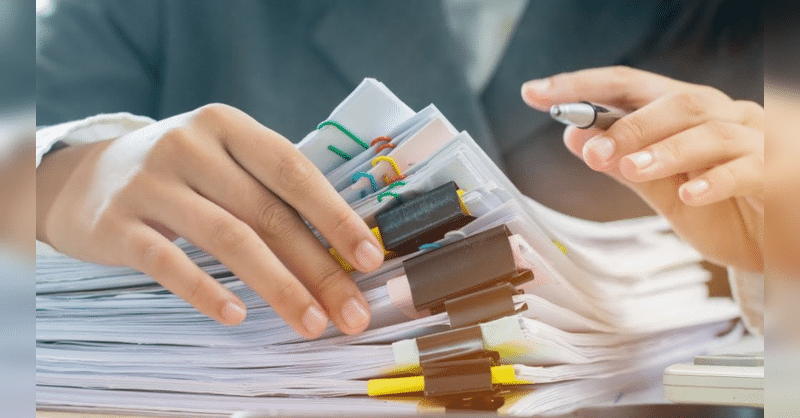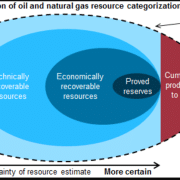⚠️ IMPORTANT LEGAL DISCLAIMER:
The information provided on this page is for general informational purposes only and does not constitute legal, financial, or investment advice. Oil and gas laws, mineral rights regulations, and royalty structures vary significantly by state and jurisdiction. While we strive to provide accurate and up-to-date information, no guarantee is made to that effect, and laws may have changed since publication.
You should consult with a licensed attorney specializing in oil and gas law in your jurisdiction, a qualified financial advisor, or other appropriate professionals before making any decisions based on this material. Neither the author nor the publisher assumes any liability for actions taken in reliance upon the information contained herein.
Understanding the Role of Royalty Audits
Royalty audits are essential tools for licensors and rights holders who depend on royalties as a core revenue stream. Whether the royalties come from intellectual property, mineral rights, music catalogs, publishing deals, or franchising agreements, these payments often involve complex calculations and multiple parties. A well-executed royalty audit verifies that all obligations under a license or contract are being met and ensures that payments reflect the true value of the assets.
In simple terms, a royalty audit helps determine if the licensee is paying what they owe. It is not just about spotting errors—it’s about protecting long-term income streams, strengthening relationships between licensors and licensees, and maintaining transparency in reporting practices.
For licensors managing valuable intellectual property portfolios or mineral assets, the financial stakes are high. Even minor underpayments can compound into significant losses over time. Royalty audits bring clarity to these arrangements, offering peace of mind and often uncovering opportunities for recovery.
Common Reasons Royalty Payments Go Wrong
Royalty discrepancies can arise for several reasons, and most are not purely intentional. Complex accounting systems, data management issues, and human error can all contribute to inaccuracies. However, some cases reveal more concerning patterns, including deliberate underreporting or misclassification of sales.
Below are common causes of royalty misstatements that audit professionals frequently encounter:
- Incorrect interpretation of contract terms: Ambiguous clauses or inconsistent contract language can lead to miscalculations.
- Inaccurate sales reporting: Licensees might omit certain sales channels, international revenues, or digital streams.
- Improper deductions: Deductions for marketing, distribution, or overhead expenses may exceed what’s allowed under the agreement.
- Exchange rate errors: When royalties are based on foreign sales, incorrect currency conversions can significantly skew payments.
- Failure to report sub-licensee income: When licensees engage third parties, the income from those deals must also be reported.
- Delays in reporting and remittance: Late payments can mask broader compliance problems and complicate year-end reconciliations.
Recognizing the source of the problem is the first step toward effective recovery. A proactive audit process identifies these issues before they erode trust or cause financial damage.
Why Royalty Audits Matter for Rights Holders
For licensors, royalty audits are about more than recovering underpaid funds—they’re about enforcing accountability and protecting the integrity of their business models. The ability to monitor licensee compliance ensures that contracts are respected, intellectual property is valued correctly, and revenue is maximized.
From an operational perspective, audits provide critical insights into how licensees market, distribute, and account for the licensed asset. These insights can influence future negotiations, renewals, or even litigation strategies.
In industries such as entertainment, pharmaceuticals, or natural resources, royalty audits are also a deterrent. The very knowledge that a licensor regularly audits can encourage more accurate reporting and discourage negligence or misconduct.
Moreover, in mergers and acquisitions, verified royalty streams often form a large portion of an asset’s valuation. A clean audit record boosts investor confidence and supports more accurate deal pricing.
Key Red Flags Indicating the Need for an Audit
Royalty audits are not random exercises—they are often triggered by signs of irregularity or patterns that suggest underreporting. Detecting these red flags early can make the difference between minor corrections and large-scale financial recovery.
Some of the most telling indicators include:
- Unexplained fluctuations in royalty income: Sharp changes in reported revenue, especially when market performance remains stable, warrant a closer look.
- Inconsistent sales-to-royalty ratios: When sales volumes grow but royalties remain flat, it could indicate improper allocation or hidden deductions.
- Delayed reporting or remittance: Repeated delays may signal internal accounting problems or attempts to conceal discrepancies.
- Complex multi-tiered agreements: Sub-licensing structures and multiple revenue streams create more opportunities for oversight or manipulation.
- Resistance to providing detailed records: When a licensee hesitates to share backup documentation, it often suggests that errors—or worse—may exist.
These warning signs do not automatically imply misconduct, but they justify further investigation. A thorough audit can confirm whether irregularities are accidental or deliberate and help determine the appropriate course of action.
Steps to Prepare for a Royalty Audit
Before launching a royalty audit, licensors must establish a structured approach. Preparation sets the tone for efficiency, professionalism, and accuracy.
Start by reviewing the contract thoroughly. Identify key provisions that define how royalties should be calculated, what documentation must be provided, and any time limits for audits. Clear understanding of the contract language ensures the audit focuses on enforceable obligations.
Next, gather historical data—payment statements, sales reports, invoices, and correspondence. Centralizing this information allows the audit team to create a baseline for comparison.
Selecting the right audit firm or internal team is critical. Look for professionals with experience in the specific industry and familiarity with relevant accounting standards. The auditor’s credibility and independence are crucial, especially if the findings may later serve as evidence in negotiations or legal proceedings.
Finally, establish communication protocols. The process should be transparent and non-confrontational. Providing the licensee with clear expectations and timelines helps maintain a cooperative tone while still preserving the licensor’s rights.
Best Practices for Conducting a Royalty Audit
An effective royalty audit balances diligence with diplomacy. While the goal is to identify discrepancies, the process should be collaborative whenever possible. Here are strategies that consistently lead to better outcomes:
- Maintain objectivity: Avoid entering the audit with assumptions. Let the data tell the story.
- Use analytical tools: Data analytics and automated reconciliation systems can identify patterns that might be missed by manual review.
- Focus on high-risk areas: Prioritize transactions or accounts where reporting is most complex or where revenue impact is highest.
- Document everything: Every communication, calculation, and finding should be recorded meticulously to support future claims or negotiations.
- Respect confidentiality: Protecting both parties’ data builds trust and complies with contractual obligations.
A professional audit is both investigative and educational. It not only corrects errors but also helps the licensee improve internal controls to prevent future mistakes.
How Technology Enhances the Royalty Audit Process
Digital transformation has revolutionized royalty auditing. Advanced data analytics, artificial intelligence, and blockchain technology have streamlined the review process, reduced manual errors, and improved transparency.
Automated reconciliation tools can compare reported figures against sales data from multiple systems, flagging anomalies almost instantly. Machine learning models can predict expected royalty ranges based on historical performance, helping auditors spot deviations more effectively.
For licensors managing digital assets, blockchain-based royalty tracking offers real-time visibility into usage and payments. Smart contracts can even automate payment distribution when pre-defined conditions are met, minimizing the potential for underreporting.
Meanwhile, cloud-based audit platforms enable secure collaboration between licensors, licensees, and auditors regardless of location. This accessibility shortens audit cycles and makes follow-up discussions more efficient.
Recovery Strategies After Identifying Underpayments
When an audit reveals underpayment, licensors have several options for recovery. The chosen approach often depends on the severity of the discrepancy, the relationship with the licensee, and the provisions in the contract.
The first step is quantifying the total shortfall—including missed payments, interest, and potential penalties. Once the amount is verified, licensors typically begin with negotiation. Many licensees prefer to settle amicably to preserve the partnership and avoid litigation.
If discussions fail, the next step might involve formal demand letters or dispute resolution procedures outlined in the agreement. In some industries, arbitration or mediation is preferred to maintain confidentiality.
In rare cases, licensors may pursue legal action. Litigation can be costly and time-consuming, but when large sums or willful misconduct are involved, it may be necessary.
Regardless of the path chosen, documenting every stage of the recovery process is crucial. Transparent, evidence-based communication supports stronger outcomes and reduces the risk of further disputes.
The Importance of Continuous Monitoring
A single audit provides valuable insights, but ongoing monitoring creates lasting financial protection. Licensors should adopt systems that enable continuous or periodic review of royalty data.
Automated dashboards and analytics tools can track sales performance, flag anomalies, and alert licensors to potential underreporting in real time. This proactive approach minimizes surprises and helps ensure consistent compliance.
Regular communication with licensees also plays a vital role. Establishing a culture of transparency encourages better reporting practices and fosters mutual trust. Over time, it can transform the audit process from a reactive measure into a collaborative effort toward accuracy and accountability.
Building Stronger Contractual Safeguards
Many of the challenges discovered during a royalty audit trace back to poorly defined contract language. Strengthening future agreements is one of the most valuable outcomes of the audit process.
Contracts should include clear definitions of royalties, allowable deductions, and reporting frequency. They should also specify the audit rights, including the scope, timing, and responsibility for audit costs.
Adding interest clauses for late or underpaid royalties serves as a deterrent against delays. Similarly, record retention requirements ensure that essential data remains accessible for a reasonable period.
By refining these clauses, licensors can reduce ambiguity, enhance enforceability, and make future audits more efficient and less contentious.
Industry-Specific Considerations in Royalty Auditing
While the fundamentals of auditing remain consistent, each industry presents unique challenges and nuances.
- Entertainment and Media: Auditors must analyze box office receipts, streaming metrics, advertising revenues, and third-party licensing arrangements. Complex revenue splits and cross-border transactions often create discrepancies.
- Oil, Gas, and Mining: Audits focus on production volumes, transportation costs, and market pricing. Errors in measurement or pricing formulas can lead to substantial underpayments.
- Pharmaceuticals and Biotechnology: Royalty audits here often involve milestone payments, patent licensing, and transfer pricing issues, requiring both financial and technical expertise.
- Franchising and Consumer Brands: Audits review franchise fees, marketing fund contributions, and regional sales data, ensuring franchisees report revenue accurately.
Understanding these industry contexts allows auditors to focus on the most relevant data points and identify risks that generic audit templates might overlook.
Preventing Future Disputes Through Transparency
Preventing underpayment is always more efficient than recovering it. The most effective way to reduce future disputes is to promote transparency and collaboration.
Licensors can provide training and guidance to licensees on reporting standards, ensuring both parties share the same understanding of contractual requirements. Periodic review meetings help clarify ambiguities before they evolve into disputes.
Adopting standardized reporting formats also improves data quality and simplifies reconciliation. When everyone uses the same framework for reporting sales, deductions, and adjustments, misunderstandings become less frequent.
By fostering open communication and consistent practices, licensors not only protect their revenue but also strengthen business relationships.
When to Seek Professional Assistance
Even well-organized licensors can face complex audit challenges that require expert intervention. Professional audit firms bring specialized skills, tools, and industry benchmarks that enhance accuracy and credibility.
Experts can assist with forensic accounting, data analytics, and contract interpretation. Their independent status also lends weight to audit findings during negotiations or legal proceedings.
Legal counsel may also be necessary, especially when audit results point to significant noncompliance or potential fraud. Attorneys ensure that recovery efforts adhere to contractual and jurisdictional requirements while protecting the licensor’s rights.
Engaging professionals early—before problems escalate—often saves time and cost while improving the likelihood of a successful resolution.
The Evolving Future of Royalty Auditing
As business models become more digital and data-driven, royalty auditing is evolving. The increasing use of automation, blockchain verification, and real-time reporting is reshaping the landscape.
Future audits will likely rely less on manual data collection and more on integrated analytics systems that continuously verify transactions. Artificial intelligence can detect anomalies in real time, while smart contracts can execute royalty payments automatically when usage is recorded.
However, even the most advanced technology cannot replace human judgment. The expertise of auditors in interpreting data, understanding contract intent, and managing relationships remains indispensable.
Licensors who embrace innovation while maintaining strong human oversight will be best positioned to protect their assets and revenue streams.
Royalty audits are a vital part of financial stewardship for any organization that licenses intellectual property, natural resources, or creative works. They uncover hidden revenue, promote accountability, and strengthen the foundation for long-term partnerships.
Recognizing red flags early, implementing sound recovery strategies, and leveraging technology for transparency can transform royalty auditing from a reactive measure into a proactive advantage.
By understanding the nuances of contracts, maintaining regular oversight, and engaging qualified professionals when necessary, licensors safeguard not only their income but also the trust and value inherent in every licensing relationship.
In the end, a well-executed royalty audit is more than a compliance exercise—it is a strategic investment in fairness, accuracy, and sustainable growth.
Do you have any questions related to the topic? Feel free to reach out to us here.











